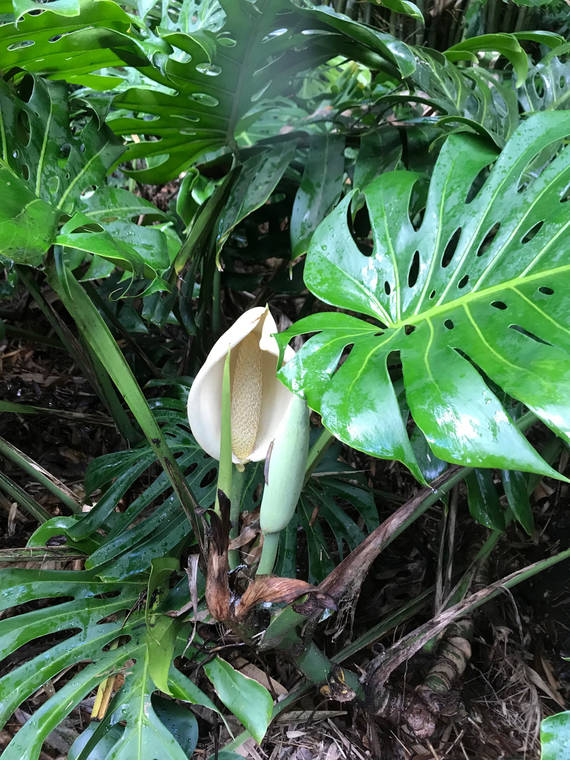Being grounded has new meaning with the lockdown caused by COVID-19.
Even though I have lived in Hawaii most of my life, I have never had a problem with rock fever until this year. But even though we are unable to travel, we can mentally escape the isolation by growing tropical fruits from throughout the tropics in our gardens.
In Hawaii we are fortunate to have the Hawaii Tropical Fruit Growers Association educating and promoting tropical fruits from around the world.
Many of these fruits are high in vitamins, minerals and energy. So the lesson for us might be instead of pies, cakes and cookies, consider fruit for your sweets. You can purchase books about fruits of Hawaii from local garden centers and bookstores that give descriptions, nutritive value and uses of most.
Take Vitamin A for instance. One papaya is supposed to contain 4,000 IU’s (international units) while 5,000 IU’s per day are listed as adequate. Passion fruit and relatives such as banana poka, poha, avocados and Surinam cherry are tropical fruits high in Vitamin A. Others to consider are Rollinia, Cherimoya and white sapote.
Some fruits famous for their contribution of Vitamin C are guava, papaya, soursop, poha, various cactus fruit and passion fruit.
One of the fruits highest in Vitamin C is the acerola, or Barbados cherry. The fruit is not a cherry but a member of the Malpighia family. The family is a fairly familiar ornamental shrub in many gardens and bears the highest known Vitamin C content fruit.
Barbados cherries, picked as they are turning green to red, average more than 4,000 units of Vitamin C per 100 grams!
Don’t forget the pineapple. Even though we see them commonly in stores, it is fun to grow your own. The pineapple will produce several crops a year if you have a large number of plants; varieties such as Red Spanish, Smooth Cayenne, Queen and Abakka are found in our gardens. When grown in the home garden, they tend to be much sweeter.
In addition, there are dozens of lesser known fruits, such as the Mountain apple and its relatives that make outstanding ornamental shrubs and trees, as well as fruit producers. Although the Mountain apple is native to India and Malaya, Jaboticaba, Pitanga and Grumichana are also very attractive with delicious fruits. The Surinam cherry, also in this family, has fruit that vary from tasty to terrible depending on seedlings.
Another favorite in its homeland is the sapodilla, which is also called chicle or chewing gum tree. It is an attractive shade tree that grows to about 30 feet. The dark brown fruit is about the size of an orange and tastes like a combination of brown sugar and butter. It will tolerate wet or dry conditions and grow from sea level to 2,000 feet.
Before you plant, remember, the adaptability of a fruit tree to moisture, temperature and wind conditions will be important factors determining selection. For example, West Indian avocado would have a chance of success in warmer, lower areas, but would be a definite gamble in high, wet inland locations. By the same token, Mexican strains are desirable in the higher, cooler areas.
In addition to adaptability to temperature conditions, there are other factors to consider in selecting fruit trees.
Fruits for home use should be selected on the basis of eating quality. Pollination requirements also must not be overlooked. Solo papaya need no pollinators, but avocado varieties should be chosen with regard to assuring proper pollination.
Pest resistance as a factor in selecting fruit trees is important. The less pesticides required, the better.
Selection for the home garden should assure a long season of available fruit by use of a series of varieties of early, mid-season and late production within the range for the species.
There are hundreds of fruits that can be grown in our Hawaii gardens, and thanks to the Hawaii Tropical Fruit Growers efforts, we are soon to have many more from around the globe.
If you need help on selecting fruit trees, contact the Master Gardener Helpline at 322-4893 in Kona or 981-5199 in Hilo.






